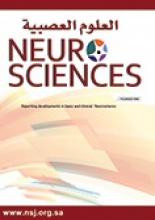Abstract
OBJECTIVE: To investigate the effects of tetanic faradic stimulation in an antagonist muscle (tibialis anterior) on agonist muscles (gastro-soleus). In addition, to show the effects of maintaining agonist muscle strength on antagonist spastic muscle group to improve gait parameters in children with spastic hemiplegia.
METHODS: We carried out the study at Pamukkale University, School of Physical Therapy, Denizli, Turkey between June 2001 and December 2002. We included 16 ambulant cerebral palsied children with a mean of age 6.25 +/- 2.89 years in the study. Each subject practiced a 20-minute electrical stimulation session plus neurodevelopmental approach (Bobath Technique) once a day, 4 days a week for 5 weeks. We performed faradic tetanic stimulation to stimulate and strengthen the tibialis anterior (antagonist muscle). We performed all tests, including goniometric measurement, the Modified Ashworth Scale, and gait analysis at the start of the treatment program, after the program, and one month after first follow up.
RESULTS: After treatment, we found significant improvements in goniometric measurements and Modified Ashworth Scale in comparison with the baseline measurements (p<0.001). However, the improvements did not continue after the first month of treatment (p>0.05). The results of the gait analysis showed only a significant difference concerning step width (p>0.05).
CONCLUSION: The results suggest that tetanic faradic stimulation was effective in improving aspects of ankle function, decreasing muscle tone and increasing range of motion in children with hemiplegic cerebral palsy during a physical therapy program.
- Copyright: © Neurosciences
Neurosciences is an Open Access journal and articles published are distributed under the terms of the Creative Commons Attribution-NonCommercial License (CC BY-NC). Readers may copy, distribute, and display the work for non-commercial purposes with the proper citation of the original work.






